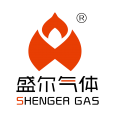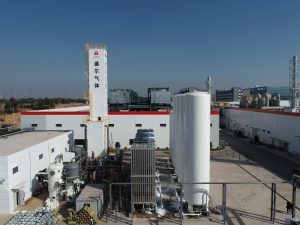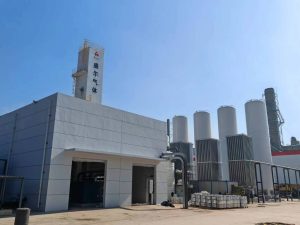氮氣在許多工業生產過程中具有關鍵作用。由於氮氣惰性且不易與其他物質反應,常用於提供保護性氣氛、防氧化及維持無塵環境等用途。對於電子製造、食品包裝、醫藥製造等行業來說,穩定可靠的氮氣供應是生產過程中不可或缺的。氮氣發生器可在現場產生高純度氮氣,替代傳統的氮氣鋼瓶供應。現場制氮具有成本效益高、持續穩定以及操作靈活的優點,受到香港和美國等地市場的廣泛關注和採用。
Nitrogen plays a vital role in many industrial processes. Its inertness and low reactivity make it ideal for providing protective atmospheres, preventing oxidation, and maintaining cleanroom conditions. Industries such as electronics manufacturing, food packaging, and pharmaceuticals rely on a steady, reliable nitrogen supply to keep production running smoothly. On-site nitrogen generators meet this need by producing high-purity nitrogen directly at the point of use, eliminating dependence on bottled nitrogen. These systems are cost-effective, offer continuous supply, and can be flexibly integrated on-site, making them increasingly popular in markets like Hong Kong and the United States.
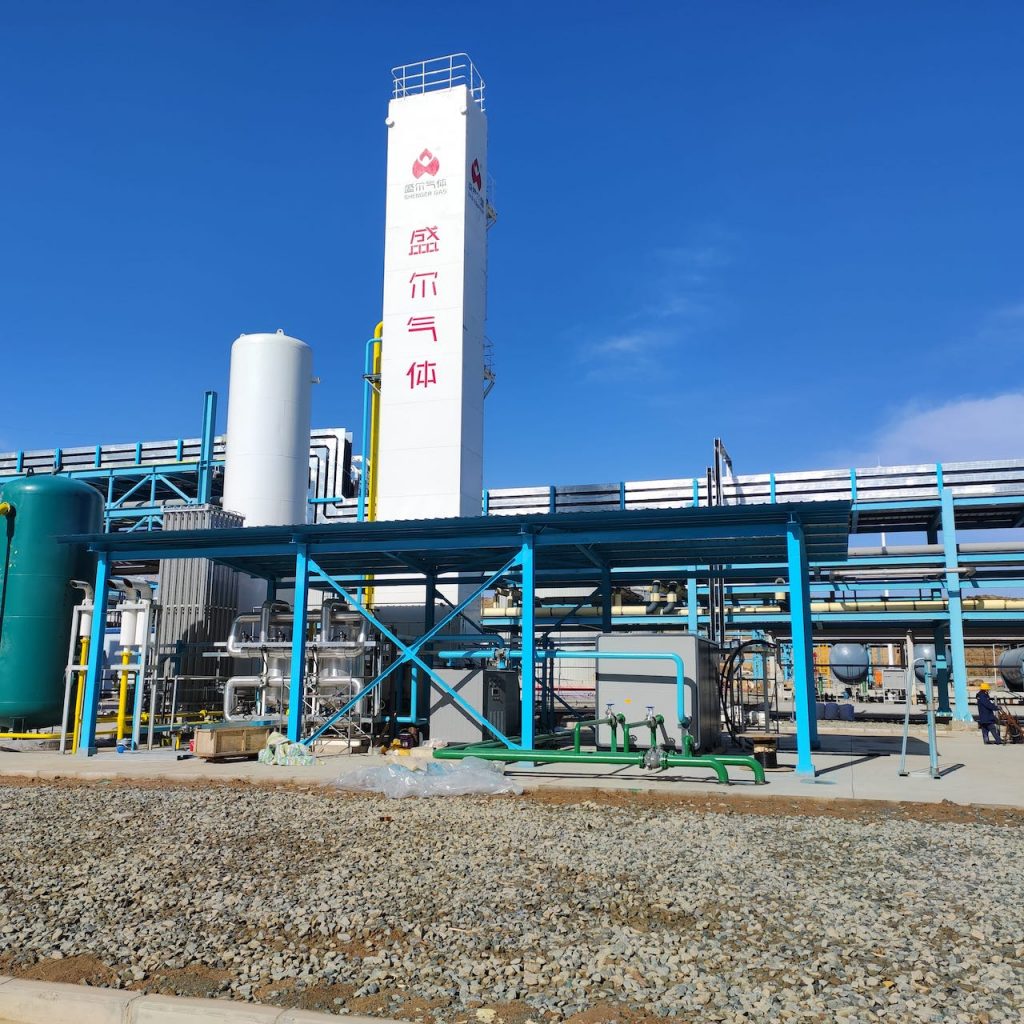
主要氮氣發生技術 (Key Nitrogen Generator Technologies)
要滿足不同行業對氮氣純度和產量的需求,主要有三種氮氣發生技術:變壓吸附(PSA)、膜分離和深冷分離(氣體液化分離)。以下分別介紹這些技術原理及特點,並對比它們的應用場合。
To meet the various purity and volume requirements across industries, there are three primary nitrogen generation technologies: Pressure Swing Adsorption (PSA), membrane separation, and cryogenic (liquefaction) separation. Below we introduce each technology and discuss their principles, characteristics, and typical applications.
變壓吸附 (PSA – Pressure Swing Adsorption)
變壓吸附(PSA)技術是最常見的制氮方法之一,適用於需要中高純度氮氣的場合。PSA系統利用兩個裝滿分子篩(吸附劑)的吸附塔,通過高壓吸附和減壓解吸過程,將空氣中的氧氣和水分子分離出來,留下一股富含氮氣的氣流。這一過程在兩個吸附塔之間交替進行,使得氮氣產出持續穩定。PSA制氮器可以產生純度在95%至99.999%之間的氮氣,並且運行成本相對較低、能耗不高,適合中小型工業現場長時間連續供氣需求。
Pressure Swing Adsorption (PSA) is one of the most widely used nitrogen generation methods, suitable for applications requiring medium to high nitrogen purity. A PSA system uses two towers filled with molecular sieve (adsorbent). By alternating between high-pressure adsorption and low-pressure regeneration, oxygen and moisture are trapped in one tower while the other tower produces a nitrogen-rich stream. The towers switch roles to provide a continuous nitrogen output. PSA nitrogen generators typically produce nitrogen with purity ranging from about 95% to 99.999%. They have relatively low operating costs and energy consumption, making them ideal for long-term, on-site nitrogen supply in small to medium industrial settings.

膜分離 (Membrane Separation)
膜分離氮氣發生技術使用特殊的高分子膜元件根據氣體分子透過速率不同的原理分離氮氣和氧氣。空氣被壓縮後通過多層疊片式膜,氧氣、二氧化碳和水分子更易透過膜,而氮氣被留在氣體側流出。膜制氮器通常產生約95%左右純度的氮氣,純度不如PSA高,但設備結構簡單、體積小、啟動速度快,維護需求低。膜制氮器特別適合需要中等純度氮氣且對純度要求不那麼嚴格的應用,例如燃油罐惰化、食品包裝前的氣體替換以及工業燃燒器中氧含量控制等場合。
Membrane nitrogen generators use special polymer membrane modules that separate nitrogen from oxygen based on different molecular diffusion rates. Compressed air is fed through stacked membrane fibers: oxygen, carbon dioxide, and water permeate through the membrane more easily, leaving nitrogen in the outlet stream. Membrane systems typically produce nitrogen with around 95% purity, which is lower than PSA systems. However, membrane generators have a simpler design, a smaller footprint, and faster startup, with minimal maintenance requirements. They are particularly suited for applications needing a continuous nitrogen supply with moderate purity, such as fuel tank blanketing, replacing oxygen in packaging lines, and controlling oxygen content in industrial burners.
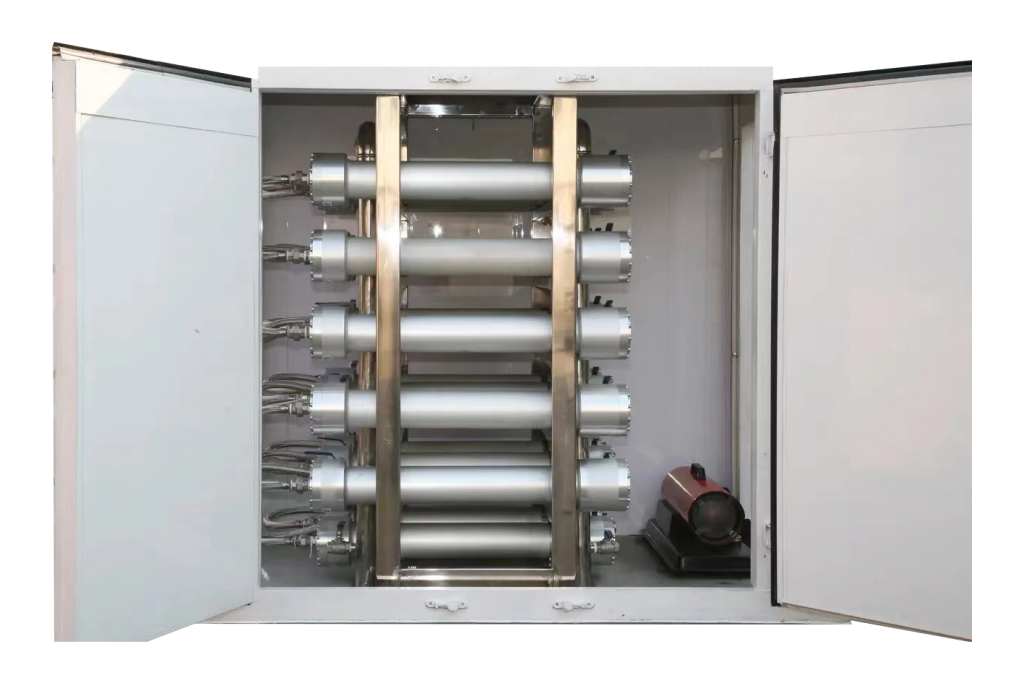
深冷分離 (Cryogenic Separation)
深冷分離(低溫空氣分餾)是在極低溫條件下將空氣液化,然後根據氮氣和氧氣的沸點差異進行分餾分離,以獲得高純度氮氣。這種技術通常應用於大規模工業需求,例如大型化工或石化企業。深冷制氮可以產生極高純度(99.999%以上)的氮氣,但設備投資和運行能耗較高,對實施條件要求嚴格。對於需要大批量高純度氮氣的場合,深冷技術仍具有不可替代的地位,但在一般工業現場中,更多採用PSA和膜技術以求靈活和經濟。
Cryogenic separation (liquefaction) involves cooling air to very low temperatures to liquefy it, then distilling it to separate nitrogen from oxygen based on their boiling points. This technology is typically used for large-scale industrial needs, such as in major petrochemical or chemical plants. Cryogenic generators can produce extremely high-purity nitrogen (often 99.999% or higher), but the equipment investment and energy consumption are significant, and the implementation requirements are strict. For applications requiring very large volumes of ultra-high-purity nitrogen, cryogenic systems remain indispensable. However, for most on-site industrial needs, PSA and membrane systems are favored for their flexibility and cost-effectiveness.
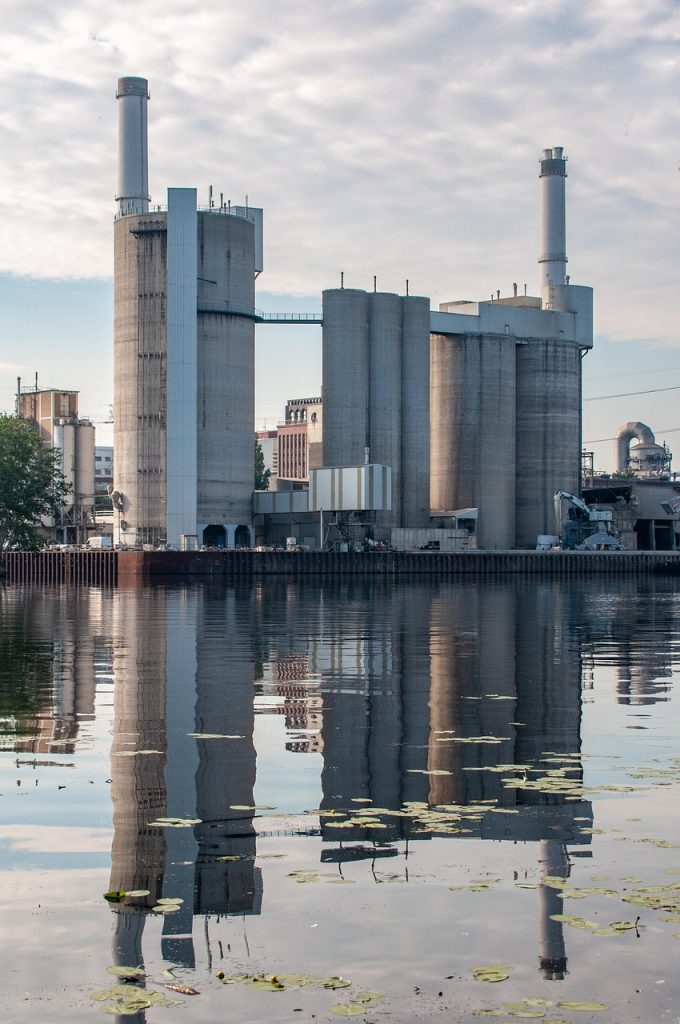
行業應用 (Industry Applications)
氮氣發生器因其可靠的現場產氣能力,被廣泛應用於多個行業。不同領域對氮氣的純度、流量和供應方式有不同要求,因而選擇合適的制氮技術和設備非常重要。以下將介紹氮氣發生器在電子製造、金屬加工、食品包裝、醫療與製藥、石油化工、新能源等主要行業中的具體應用場景。
On-site nitrogen generators have become widely adopted across various industries because of their ability to reliably produce nitrogen on demand. Different sectors have specific requirements for nitrogen purity, flow rate, and supply consistency, so choosing the right generation technology and equipment is crucial. The following sections describe how nitrogen generators are applied in key industries such as electronics manufacturing, metal processing, food packaging, medical & pharmaceutical, petrochemicals, and new energy.
電子製造 (Electronics Manufacturing)
電子製造業對氮氣純度和穩定性要求極高。例如,在半導體晶片生產、印刷電路板(PCB)焊接和元件封裝過程中,需要在惰性無塵環境下操作以防止氧化和污染。氮氣被用於回流焊爐和波峰焊中製造保護氣氛,還用於晶圓製程中的光刻和濕法刻蝕設備。對於這類應用,多數企業選擇PSA氮氣發生器,因其可以提供99%以上的高純度氮氣,確保精密製程的質量。同時,氮氣發生器體積小、可直接安裝在生產線旁,保證即開即用,非常適合電子廠房的連續生產需求。
In electronics manufacturing, nitrogen purity and stability are critical. For example, in semiconductor wafer fabrication, printed circuit board (PCB) soldering, and component packaging, processes are carried out in an inert cleanroom environment to prevent oxidation and contamination. Nitrogen is used to create a protective atmosphere in reflow ovens and wave soldering, and it is used in semiconductor lithography and wet etching tools. For these applications, many companies use PSA nitrogen generators because they provide high-purity nitrogen (typically over 99%) that ensures the quality of precision processes. Additionally, on-site generators are compact and can be installed right next to production lines, ensuring nitrogen is available on demand. This setup is ideal for the continuous production requirements of electronics factories.
金屬加工 (Metal Processing)
金屬加工行業中,氮氣發生器主要用於金屬熱處理、焊接保護和激光切割等應用。熱處理(如退火、淬火)過程中常用氮氣作為保護氣體,避免金屬表面氧化或炭化;一些專業的金屬熱處理工藝甚至在氮氣氛中進行以控制淨化度。此外,焊接工藝(特別是不銹鋼或銅焊)常需氮氣或氮氣混合物作為保護氣體。激光切割中使用高壓氮氣吹氣,可以清除熔渣並減少切割痕跡中的氧化,提升切割品質。在這些應用中,要求氮氣純度一般在95%以上即可,PSA或膜式氮氣發生器均可勝任,視生產規模和純度需求而定。
In metal processing, nitrogen generators are used for heat treatment, welding shielding, and laser cutting. During heat treatments such as annealing and quenching, nitrogen serves as a protective gas to prevent oxidation or carburization of metal surfaces. Some specialized heat-treatment processes even use a pure nitrogen atmosphere to achieve precise control. In welding, especially for stainless steel or copper alloys, nitrogen (or nitrogen-based mixtures) is often used as a shielding gas. In laser cutting, high-pressure nitrogen is blown through the nozzle to clear molten debris and minimize oxidation on the cut edge, improving cut quality. For these applications, nitrogen purity of around 95% or higher is usually sufficient, so either PSA or membrane generators can be used depending on production scale and purity requirements.
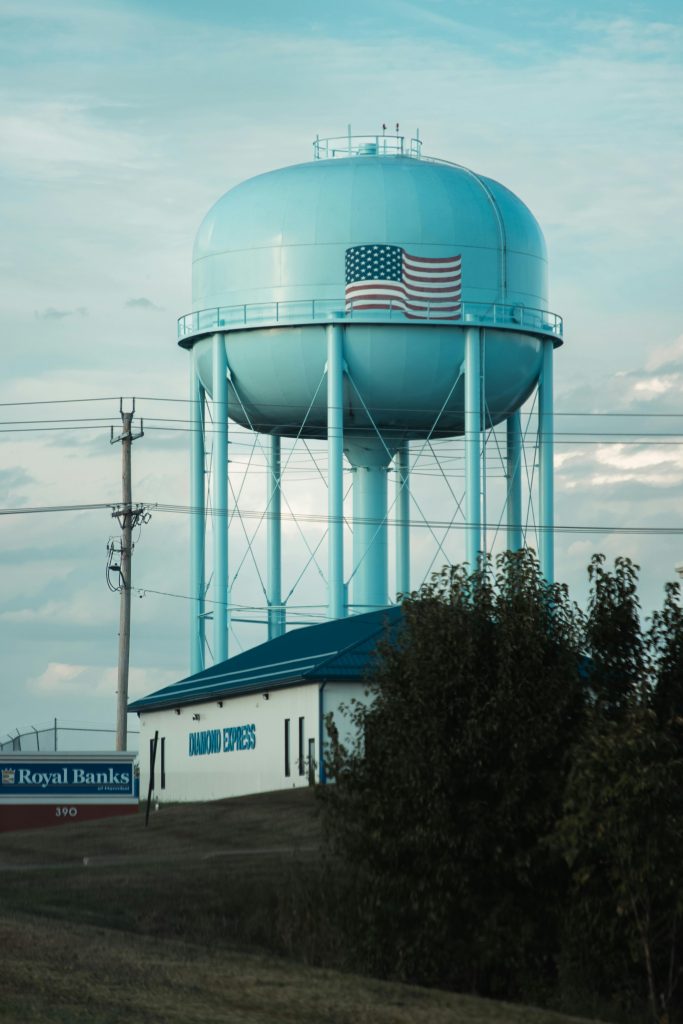
食品包裝 (Food Packaging)
食品加工與包裝行業廣泛使用氮氣來延長食品的保鮮期和品質。常見做法是在包裝過程中使用氣調包裝技術,用氮氣置換包裝袋內的氧氣,減緩食品氧化變質。例如,薯片、速凍食品、熟食以及飲料工廠都會使用氮氣充填包裝袋,確保產品在運輸和銷售過程中的新鮮度。與此同時,氮氣也被用於食品儲藏設施或液體儲槽中置換氧氣或水分,以提高保存效果。食品工業對氮氣的純度要求一般不如電子或醫藥高,通常選用膜式或PSA氮氣發生器即可滿足需求,而且現場制氮可降低氣體運輸成本並簡化操作流程。
The food processing and packaging industry makes widespread use of nitrogen to extend the shelf life and quality of products. A common practice is Modified Atmosphere Packaging (MAP), where nitrogen is used to replace oxygen inside the packaging, slowing down oxidation and spoilage. For example, snack foods, frozen meals, deli meats, and beverage production lines often fill packages with nitrogen to keep products fresh during transportation and sale. Additionally, nitrogen is used in food storage silos or liquid tanks to displace oxygen and moisture, further improving preservation. The purity requirements in the food industry are generally lower than in electronics or pharmaceuticals, so membrane or PSA nitrogen generators usually suffice. On-site nitrogen generation reduces the cost of gas deliveries and simplifies packaging operations.
醫療與製藥 (Medical & Pharmaceutical)
醫療與製藥行業對氮氣純度和潔淨度要求極高,需要無微粒、無油污的純凈氮氣。氮氣在這些領域主要應用於藥品合成反應、無菌充填、藥品包裝和凍乾等方面。例如,在抗生素、生物藥品製造過程中,氮氣可以置換反應器中的氧氣,防止藥物氧化變質。在藥品包裝時,氮氣則可用於吹掃瓶子或包裝盒內部,形成惰性氛圍;在冷凍干燥儀中使用氮氣抽真空或保壓,保證干燥環境的純凈。此類應用往往需要高純度(99%以上)的氮氣,通常採用PSA氮氣發生器來滿足GMP等製藥標準。此外,醫院實驗室和醫療器械行業也常用氮氣作為分析儀器惰性載氣或切割保護氣體。
The medical and pharmaceutical industries require very high purity and cleanliness of nitrogen, free from particles and oil. Nitrogen is used in drug synthesis reactions, sterile filling, drug packaging, and freeze-drying (lyophilization). For example, in the production of antibiotics or biopharmaceuticals, nitrogen is used to replace oxygen in reactors to prevent oxidation of products. During drug packaging, nitrogen can purge bottles or packaging containers to create an inert atmosphere. In freeze-dryers, nitrogen is used to create a vacuum or maintain pressure, ensuring a pure drying environment. These applications often demand nitrogen purity of 99% or higher, so PSA generators are typically used to meet pharmaceutical (GMP) standards. In addition, hospital labs and medical device manufacturing use nitrogen as an inert carrier gas for analysis instruments or as a shielding gas during cutting processes.
石油化工 (Petrochemical & Chemical)
石油、天然氣與化工行業中,氮氣主要用於管線吹掃、儲罐保護和油田增產等場景。管道或裝置開工前,常使用氮氣吹掃管線,清除氧氣和其他污染物殘留,確保安全。儲罐內部通常充氮封存,以防止氧化或爆炸性氣體積聚,並保護產品質量。在石油採油領域,氮氣注入油田也可以用於提高油藏壓力,進行增產作業。此外,化學工藝中的反應器也經常需要氮氣置換,以提供惰性氛圍。由於所需氮氣量大且持續供應要求高,石化行業通常採用大型深冷分離設備或多套PSA系統來供應。
In the oil, gas, and petrochemical industries, nitrogen is used for pipeline purging, tank blanketing, and enhanced oil recovery. Before start-up, pipelines and equipment are purged with nitrogen to remove oxygen and other contaminants, ensuring safe operations. Storage tanks are blanketed with nitrogen to prevent oxidation or explosive vapor formation and to preserve product quality. In oil fields, nitrogen can also be injected into reservoirs to maintain pressure and enhance oil recovery. Additionally, chemical reactors in processing plants are often purged with nitrogen to provide an inert atmosphere. Because these applications require large volumes and continuous supply, petrochemical facilities typically use large cryogenic systems or multiple PSA units to meet demand.
新能源 (New Energy)
新能源行業中,氮氣也有多種應用。電動車和鋰電池製造需要極低的濕度環境,氮氣用於電池組裝和電解液處理過程,防止水分和氧氣引發不良反應。此外,在光伏太陽能電池製造過程中,氮氣被用來置換爐內氣氛或吹掃設備,以控制溫度和保護硅片免於氧化。在燃料電池和氫能領域,製造過程中的惰性氣氛也常需氮氣。此外,風力發電設備和儲能電站中對氮氣的需求也在增長。例如,氮氣可用於電池儲能系統中的洩漏測試和開關裝置的絕緣氣體。隨著新能源產業的快速發展,對於高純度和低成本氮氣供應的需求愈發明顯。
In the new energy sector, nitrogen has several uses. Electric vehicle and lithium-ion battery manufacturing require extremely low humidity conditions. Nitrogen is used during cell assembly and electrolyte processes to prevent moisture or oxygen from causing undesirable reactions. In photovoltaic solar panel manufacturing, nitrogen is used to purge furnace chambers and protect silicon wafers from oxidation during processing. In fuel cell and hydrogen technologies, inert atmospheres often rely on nitrogen. Additionally, the wind power and energy storage industries are seeing growing nitrogen use. For example, nitrogen may be used in battery energy storage systems for leak testing and as an insulating gas in switchgear. As the new energy industry expands rapidly, the demand for high-purity, low-cost nitrogen supply is becoming increasingly important.
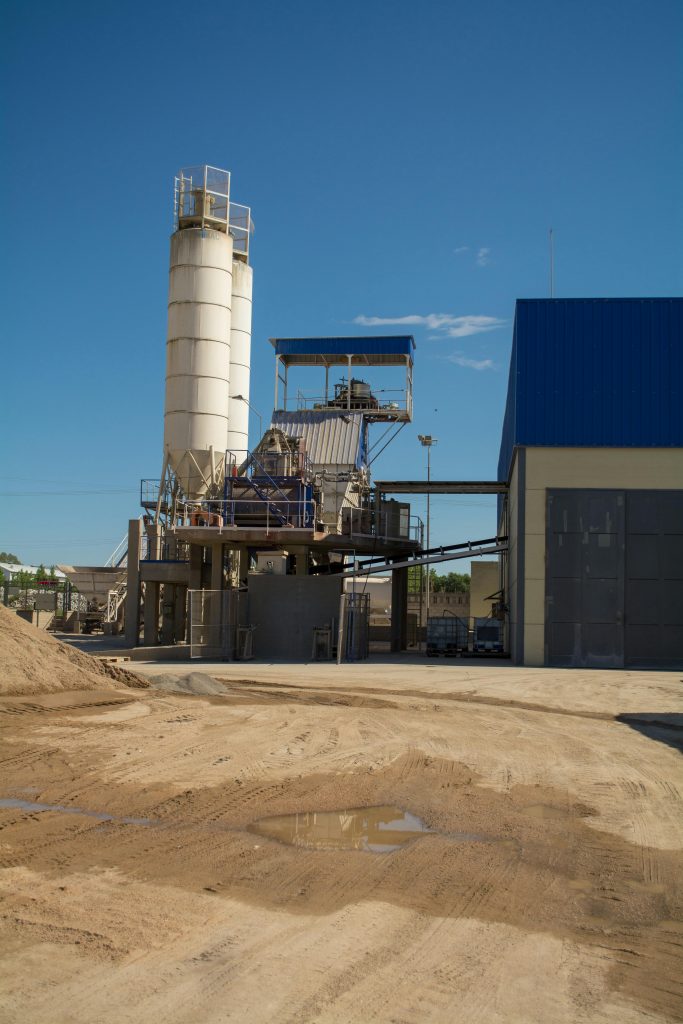
主要應用概覽 (Industry Application Summary)
| 行業 Industry | 應用 (Applications) |
|---|---|
| 電子製造 (Electronics) | 提供元件製造與焊接過程中的惰性氣氛 / Provides inert atmospheres for component manufacturing and soldering |
| 金屬加工 (Metal Processing) | 用於金屬熱處理、焊接保護和激光切割 / Used for metal heat-treatment, welding shielding, and laser cutting |
| 食品包裝 (Food Packaging) | 食品氣調包裝和儲存保鮮 / Gas flushing in food packaging and storage preservation |
| 醫療製藥 (Medical/Pharma) | 藥品生產與包裝中的無菌惰性環境 / Sterile inert environments in drug production and packaging |
| 石油化工 (Petrochemical) | 管線吹掃、儲罐覆蓋及油田增壓 / Pipeline purging, tank blanketing, and enhanced oil recovery |
| 新能源 (New Energy) | 電池和太陽能製造中的無氧乾燥環境 / Oxygen-free, dry environments in battery and solar manufacturing |
| 輪胎充氣 (Tire Inflation) | 維持輪胎內部壓力和延長壽命 / Maintains stable tire pressure and extends lifespan |
總結 (Conclusion)
由於氮氣在多個領域扮演重要角色,選擇合適的氮氣發生技術和設備是確保生產效率和安全性的關鍵。通過了解各種制氮方法和行業需求,企業可以根據自身應用場景選擇最優方案,從而實現成本節省和生產優化。
As nitrogen plays an important role across many fields, choosing the right nitrogen generation technology and equipment is key to ensuring production efficiency and safety. By understanding the various generation methods and the requirements of each industry, businesses can select the optimal solution for their applications, achieving cost savings and improved productivity.
